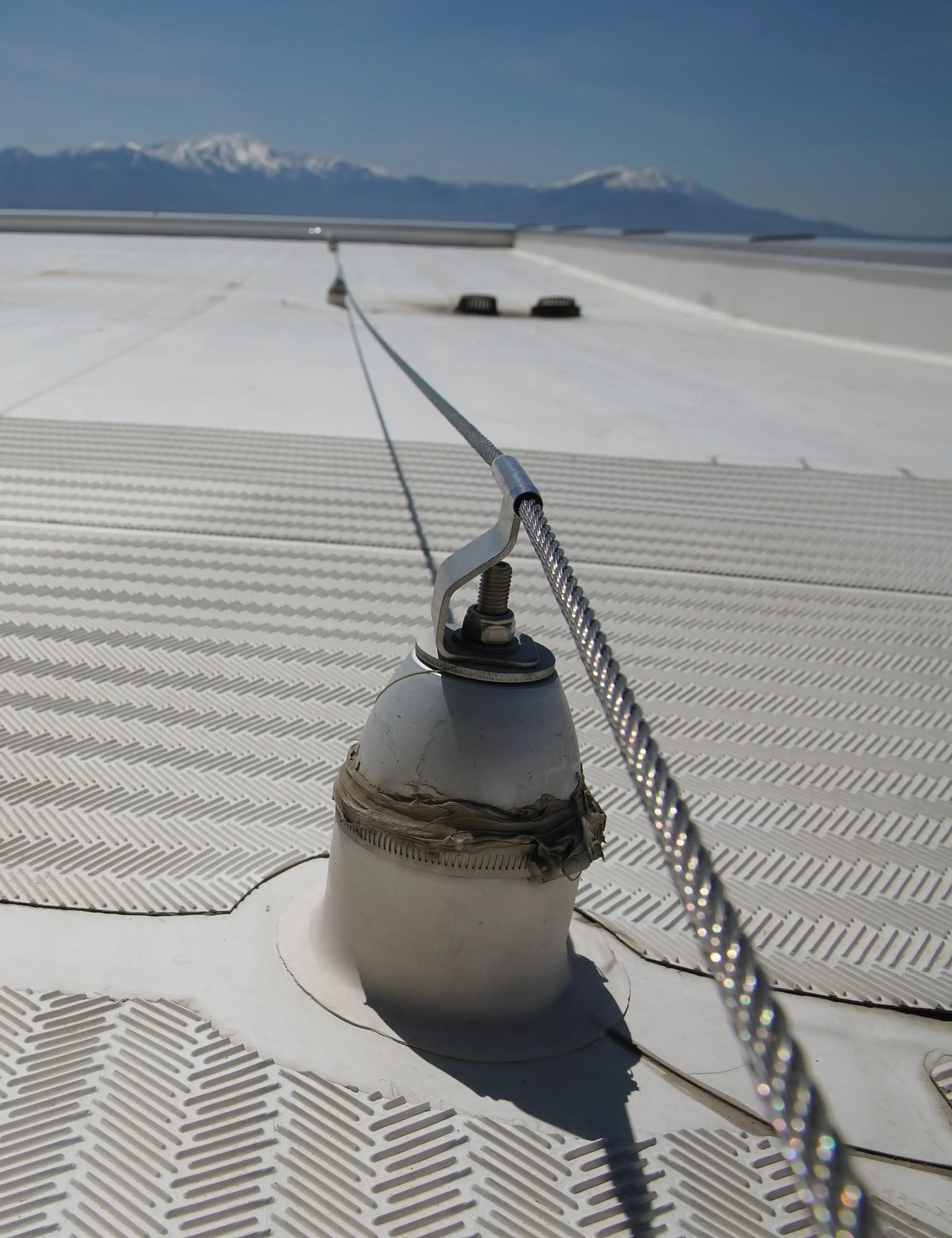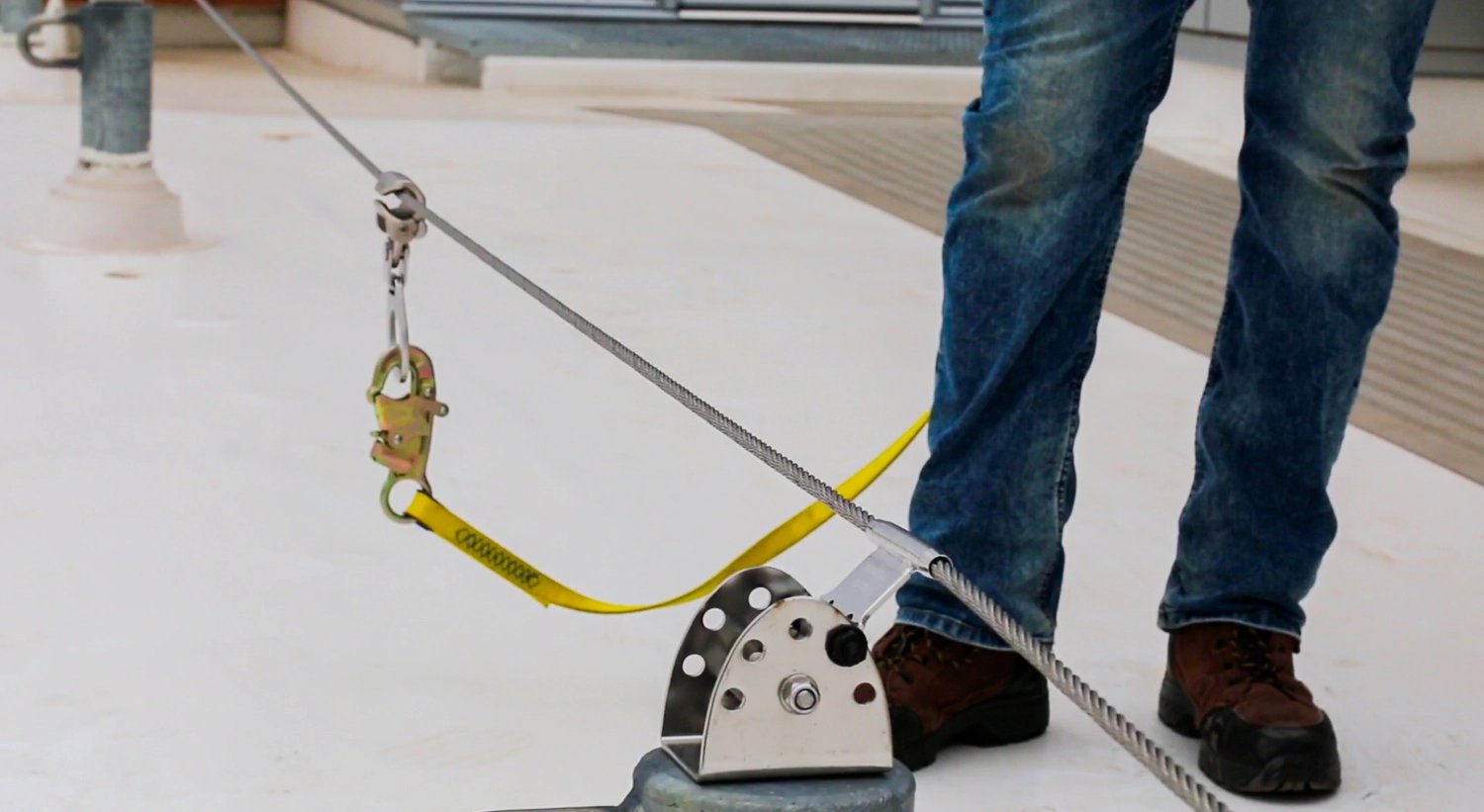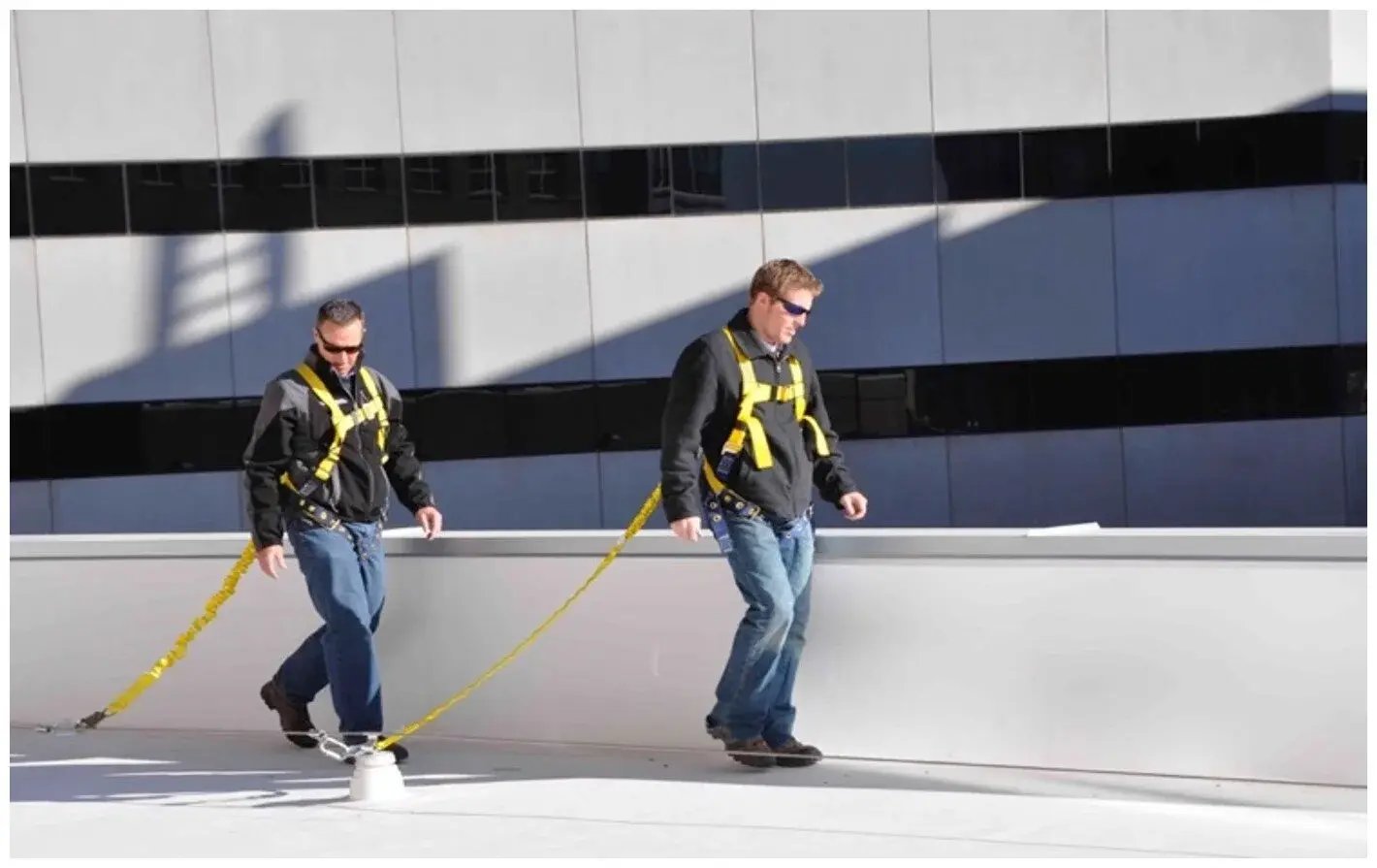Horizontal Lifeline Systems
Custom and Pre-Engineered Lifeline Systems to Meet Your Application’s Needs
Horizontal Lifeline Systems, also known as HLL systems, are utilized in many of the fall arrest and fall restraint systems. Horizontal lifelines are common fall protection solutions in work areas that lack existing anchor points for personnel tie–off. In simplest form, the horizontal lifeline consists of a cable attached to two or more anchor points on a roof-top, crane runway, bridge or outdoor construction site, or any other elevated work area that poses a fall risk to personnel. A horizontal lifeline can be positioned at the base of the structure (e.g., a roof), overhead (e.g., a gallows style system commonly used for railcar and truck load/unloading applications), or somewhere in-between these points (e.g., a crane rail application).
When used in combination with personal protective equipment, a horizontal lifeline can arrest a fall, limiting the amount of force that is transferred both to the worker and the fall arrest system. This same combination of horizontal lifeline, body harness, and lanyard can also serve as a fall restraint system, limiting the the worker’s ability to move close enough to fall over an unprotected leading edge. The fall restraint and fall arrest properties of horizontal lifelines make the HLL an integral part of many fall protection systems.

System Types
Diversified Fall Protection a complete turnkey provider of OSHA compliant horizontal lifeline systems. Contact us for expert assistance with your fall arrest, fall restraint and fall protection requirements.
Design Considerations
Horizontal lifelines can offer the following advantages:
- Provides fall protection coverage across a wide distance. The distance spanned by a horizontal lifeline is limited only by the ability to attach a series of anchor points to surrounding structure. For example, crane rail HLL systems can safely span distances in excess of 600 feet.
- Impart smaller footprints on elevated work spaces
- Lighter than fabricated steel solutions
- Constructed from stainless steel components, horizontal lifelines offer corrosion resistance and exceptional component longevity.
- Does not require the time to custom fabricate relative to steep fall protection systems
- Does not require the time to custom fabricate relative to steep fall protection systems
Special care must be taken to account for the loads on various anchor points and deflection in the event of a fall, thus requiring certified and experienced engineering and installation capabilities. Each anchor point must be secure enough to withstand the forces associated a fall and a thorough review of the work area is needed to ensure that a worker will not strike pipes, equipment, or other surfaces when falling. Load and deflection rates are determined by a number of factors, including pre-tension of the cable, length of the area spanned by the horizontal lifeline, and the number of workers connected to the system.

b-1.jpg?width=1368&height=1340&name=Rail%20(175)b-1.jpg)





1.webp?width=500&height=380&name=HLL%20Overhead%20(661)1.webp)
.webp?width=640&height=429&name=pipe-rack-systems-1-1%20(1).webp)

